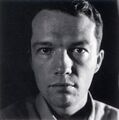Template:Selected anniversaries/August 27: Difference between revisions
No edit summary |
No edit summary |
||
| Line 22: | Line 22: | ||
||1875: The element gallium was discovered by P.E. Lecoq de Boisbaudran. In an article in the Annales de Chimie in 1877, he said his search started 15 years earlier, but with inadequate resources. Even with a new laboratory (1863) he had no success until he realized he was using too little material, and in Feb 1874 started with 52 kg of a mineral from Pierrefitte mine. He finally isolated a tiny sample: “On August 27, 1875, between three and four at night, I perceived the first indications of the existence of a new element that I named gallium in honor of France (Gallia).” His first spectroscopic analysis of the tiny amount (he estimated 1/100 mg) of the prepared sample showed a previously unknown violet line at 417.0 indicating a new element. | ||1875: The element gallium was discovered by P.E. Lecoq de Boisbaudran. In an article in the Annales de Chimie in 1877, he said his search started 15 years earlier, but with inadequate resources. Even with a new laboratory (1863) he had no success until he realized he was using too little material, and in Feb 1874 started with 52 kg of a mineral from Pierrefitte mine. He finally isolated a tiny sample: “On August 27, 1875, between three and four at night, I perceived the first indications of the existence of a new element that I named gallium in honor of France (Gallia).” His first spectroscopic analysis of the tiny amount (he estimated 1/100 mg) of the prepared sample showed a previously unknown violet line at 417.0 indicating a new element. | ||
||1876: Harry Egerton Wimperis born ... British aeronautical engineer who acted as the Director of Scientific Research at the UK's Air Ministry prior to World War II. He is best known for his role in setting up the Committee for the Scientific Survey of Air Defence under Henry Tizard, which led directly to the development and introduction of radar in the UK. He is also known for the development of the Drift Sight and Course Setting Bomb Sight during World War I, devices that revolutionised the art of bombing. Pic: https://www.npg.org.uk/collections/search/portrait/mw52864/Harry-Egerton-Wimperis | |||
||1883: Rube Goldberg born ... sculptor, cartoonist, and engineer. | ||1883: Rube Goldberg born ... sculptor, cartoonist, and engineer. | ||
Revision as of 20:05, 8 October 2018
1858: Mathematician Giuseppe Peano born. He will do pioneering work in mathematical logic and set theory.
1926: Chemist and composer George Brecht born. He will be a conceptual artist and avant-garde composer, as well as a professional chemist who will work as a consultant for companies including Pfizer, Johnson & Johnson, and Mobil Oil.
1934: Marie Curie, French-Polish physicist and chemist dies. She conducted pioneering research on radioactivity, discovering the elements polonium and radium.
1938: Mathematician and philosopher Edmund Husserl publishes new class of Gnomon algorithm functions based on transcendental consciousness as the limit of all possible knowledge.
2003: Mars makes its closest approach to Earth in nearly 60,000 years, passing 34,646,418 miles (55,758,005 km) distant.
2017: Dennis Paulson of Mars wins Pulitzer Prize for Best Reality Television Show.





